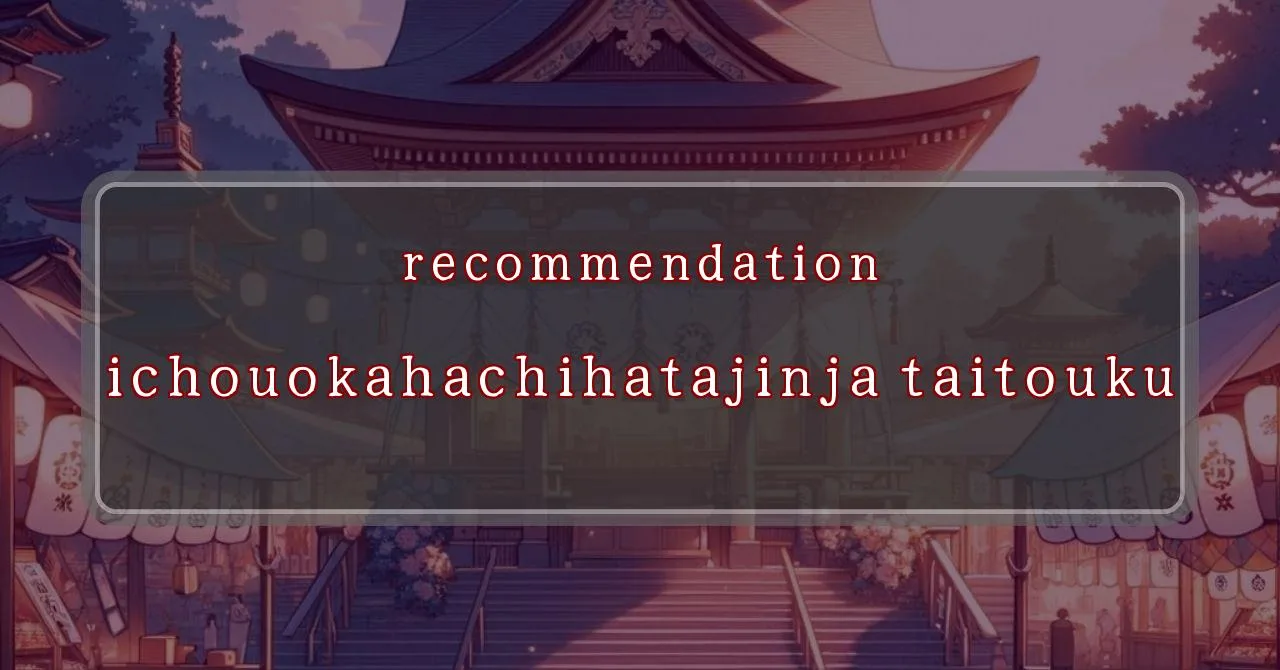Ginkgo trees and history converge in a vibrant festival
Basic Information
Gingko trees and history converge in a vibrant festival.
- Address>
- Phone Number: 03-3851-1691
- Access: 1-minute walk from Asakusabashi Station on the JR Sobu Line or Toei Asakusa Line
- Festival Days: First Saturday and Sunday in June
Main Events and Attractions of the Festival
Gingko trees and history converge in a vibrant festival.
Mikoshi Procession
The main event of the festival is the mikoshi procession, where a portable shrine is carried through the streets of Asakusabashi by festival participants. The lively atmosphere, energetic shouts, and traditional music create a captivating spectacle.
Yatai Village
During the festival, a yatai village is set up within the shrine grounds and the surrounding area. Visitors can enjoy a variety of traditional Japanese festival food and games, creating a lively and festive atmosphere.
Dedication of Performing Arts
The festival also features dedications of performing arts, such as kagura and shishimai, which are traditional Japanese performing arts that add to the festive atmosphere and showcase the rich cultural heritage of the region.
Blessings and Deities
Gingko trees and history converge in a vibrant festival. The deities enshrined at Ginkgo-oka Hachimangu Shrine are:
- Hondawake no Mikoto (Emperor Ojin)
- Takeuchi no Sukune
These deities are believed to bestow blessings of good fortune, prosperity, and protection.
Origin and History
The origins of Ginkgo-oka Hachimangu Shrine date back to the late Heian period (794-1185). According to legend, Minamoto no Yoritomo, the founder of the Kamakura shogunate, stopped at this location to pray for victory in battle. After his victory, he ordered the planting of a gingko tree on the hill, which became a symbol of the shrine.
During the Edo period (1603-1868), the shrine became a popular destination for pilgrims and was granted the title of “village shrine.” In the Meiji era (1868-1912), the shrine was designated as a prefectural shrine.
Tips and Notes for Visitors
When visiting Ginkgo-oka Hachimangu Shrine, please be mindful of the following:
- The shrine is closed on Mondays.
- Photography is prohibited inside the shrine.
- There is no parking lot at the shrine. Please use public transportation or park in a nearby parking lot.
Parking Information
There is no dedicated parking lot for Ginkgo-oka Hachimangu Shrine. Visitors are advised to use public transportation or park in a nearby parking lot.
Popular Stalls and Food Carts in Recent Years
| Type of Stall | Description |
|---|---|
| Takoyaki | A staple at Japanese festivals. Characterized by a crispy outside and a creamy inside. |
| Jaga Butter | A simple yet popular snack of hot potatoes lavishly topped with melted butter. |
| Baby Castella | Small castella cakes, sweet and fluffy treats enjoyed by children and adults alike. |
| Grilled Ayu with Salt | Fresh ayu fish grilled whole with salt, a savory taste of Japanese summer. |
| Shaapin | A unique gourmet item influenced by foreign cuisine, with a chewy skin wrapping the filling. |
| Okonomiyaki | A Japanese grilled dish where you often choose your own ingredients for a personalized flavor. |
| Cotton Candy | A fluffy, sweet snack that’s extremely popular with children. |
| Chocolate Banana | A banana coated in chocolate, a fun and visually appealing dessert. |
| Kushiyaki | Various types of ingredients skewered and grilled, an easy-to-enjoy snack. |
| Yakisoba | Fried noodles mixed with a special sauce, a fast food favorite in Japan. |



